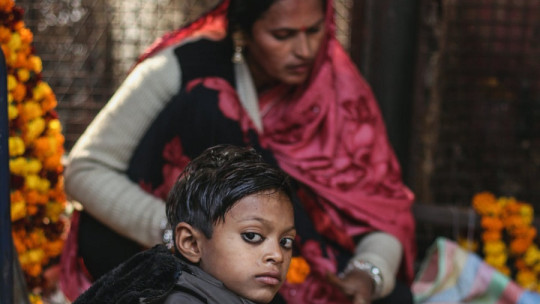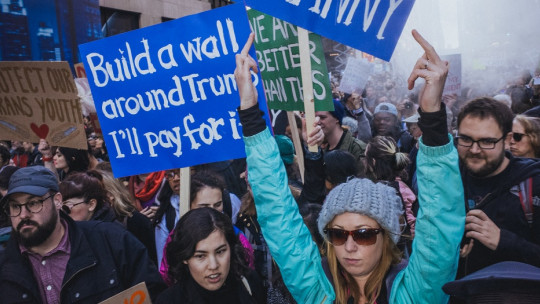
Dehumanization is a concept that is being studied more and more frequently, trying to find out what exactly its implications are.
But this phenomenon can go one step further, giving rise to what is known as metadehumanization With these lines we are going to try to explain what exactly this complex idea means, what are the features that define it and how it affects the person who experiences it.
What does metadehumanization consist of?
If we want to understand the concept of metadehumanization, it is essential that we first make a short introduction in which the phenomenon of dehumanization is clarified. Dehumanization is a type of behavior by which a person or group of people deny the human condition of another or other individuals
This form of discrimination occurs, therefore, entails the consideration of a certain group of subjects as less human or less valid humans. The argument put forward for this is based on one or more of the characteristics of these subjects, which place them in a different group from the point of view of the one who dehumanizes.
Before focusing on metadehumanization, which represents a leap further in this reasoning, we must understand dehumanization better. Along the history, This behavior has given rise to acts that have ranged from mere discrimination to humiliation and, finally, to some of the most serious crimes committed
Some of these events would be slavery, which for centuries was common in different cultures, war crimes, genocide or the denial of certain fundamental rights, such as the right to vote, due to a series of characteristics that, according to the legislators, made them less human or humans of a lesser category.
This dehumanization can be exercised by virtue of physical, social, religious, ethnic, national, political differences or any other dimension that can segregate people into different typologies and one of them is willing to discriminate against other groups due to this divergence.
Metadehumanization implies moving forward on this issue to make a change in perspective, as we will explain later. Some of the clearest and most forceful examples of dehumanization that have been carried out throughout history, with terrible consequences, have been that of the Native Americans by the United States, which in its Declaration of Independence described them as savages and ruthless, or the Jews by Nazi Germany, who were systematically executed, giving rise to the Holocaust.
Obviously, Not all examples of dehumanization reach these extremes, as there are much more subtle behaviors, such as the use of derogatory epithets or animal names to refer to a specific population. All of them represent a way of considering a group as less human than they are.

Characteristics of this phenomenon
Now that we have been able to know in more detail what dehumanization refers to, we can take the step and enter the field of meta-dehumanization. This concept involves a deeper level of analysis, since it places the point of view, not on the group that is dehumanizing other people, but on those people who are feeling dehumanized.
Therefore, metadehumanization would refer to the perception of a person or group of people being treated as if they were less human or not human at all by other individuals It is important to note that this perception may or may not correspond to reality. That is, it is possible that these people are really being dehumanized, or they may be feeling that way even if it is not true.
The main effect of metadehumanization is, paradoxically, the dehumanization of the opposing group. In other words, when a group feels that it is being treated as less human by another group (we repeat, even if this is not really the case and everything is reduced to a mere perception), it is most likely that the apparently discriminated group will begin to time to dehumanize the other group, creating a rebound effect.
Obviously, This effect can occur again in the other direction and begin with an escalation of discrimination, hatred and polarization between groups which can end up breaking out into a conflict between both parties. This behavior can be observed between groups with very opposing positions, such as rival fans of a sports club, or even between followers of different political parties.
The consequences of metadehumanization
Now that we know that metadehumanization entails a process of reciprocal dehumanization that can escalate between both groups, we can investigate some of the consequences of this phenomenon. One of them is the increase in acceptance of carrying out negative actions against the opposing group
Furthermore, this acceptance will be greater the more the process of mutual dehumanization escalates. Likewise, reprisals of an increasingly severe nature will be accepted, generating a vicious circle in which the attacks are sequentially more serious and perceived as increasingly justified by the group that commits them, which in turn gives rise to prompt the other group to act in the same way.
It is evident that this situation generates a very dangerous dynamic, since Dehumanization and meta-dehumanization are increasing and this justifies the use of increasingly cruel methods on both sides and dehumanizing. The positions will become increasingly opposed, if possible, and the opponent will become a rival and then openly an enemy, who must be eliminated.
At that point, the situation will be unsustainable, and the conflict will be so heated that it will be difficult to calm it down. But is there a way to do it?
How to reverse metadehumanization
The reality is that metadehumanization and the phenomenon it triggers do not have to be a path of no return. In other words. It is possible to reverse its effects and prevent the escalation of violence from being such that there is no turning back for the groups of people involved in said conflict. The question is how to achieve it.
In a study on metadehumanization led by Nour Kteily, in 2016, they discovered that just as this mechanism exists, the exact opposite exists, which is humanization and therefore metahumanization. We saw before that a downward and polarizing spiral of positions between both groups was generated. In this case, just the opposite happens.
That is, when we have two groups of people who, for whatever reasons, have fallen into the spiral of meta-dehumanization and therefore find themselves in a growing conflict between them, We could reverse the situation if one of the groups takes the initiative and adopts a humanizing attitude towards the other
Just as it happened in a negative way, if a group carries out actions towards the other group, but with humanizing connotations, the tension generated will decrease and it will be more likely that the other group will also decide to reciprocate with a similar action, which could lead to stop the de-escalation and change the direction of the cycle in which they were moving.
The explanation of this phenomenon is simple, since metahumanization is still the negative of the photo of metadehumanization. If a group of people believes that another group considers them human and therefore recognizes the rights that they have as people, the logical reaction is to do the same with respect to the first
This is how another type of spiral is generated, in this case of a positive nature, in which progressively the positions between both groups, previously opposed, become closer and closer until they recognize each other as totally human and therefore grant all rights. what they deserve.
This decline ends when the situation is completely normalized and discrimination between both groups of people disappears, although both maintain the identity traits that had previously generated the conflict. That is, they continue to be independent groups, but there is no longer a problem between the two.
The conclusion that can be drawn from this observed phenomenon is that, in a situation of critical tension between two or more groups, there is a possible solution, which is to promote metahumanization, as opposed to metadehumanization. For it, It is required that one of these groups have a gesture, an action, in which the opposite is humanized
It will also be necessary for the rival group to pick up the baton and return this action, to give rise to the de-escalation that is sought in order to return to normality between both.








